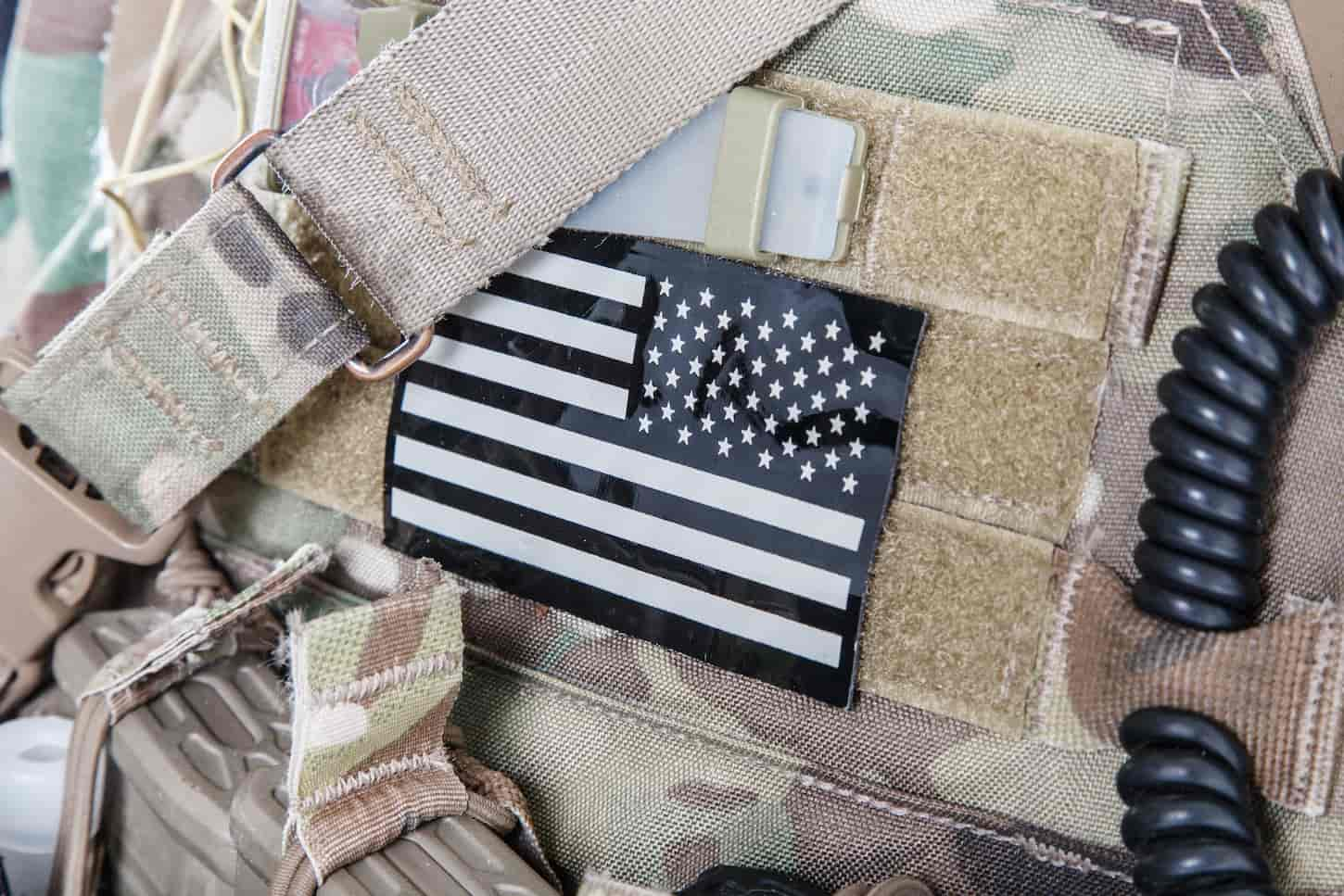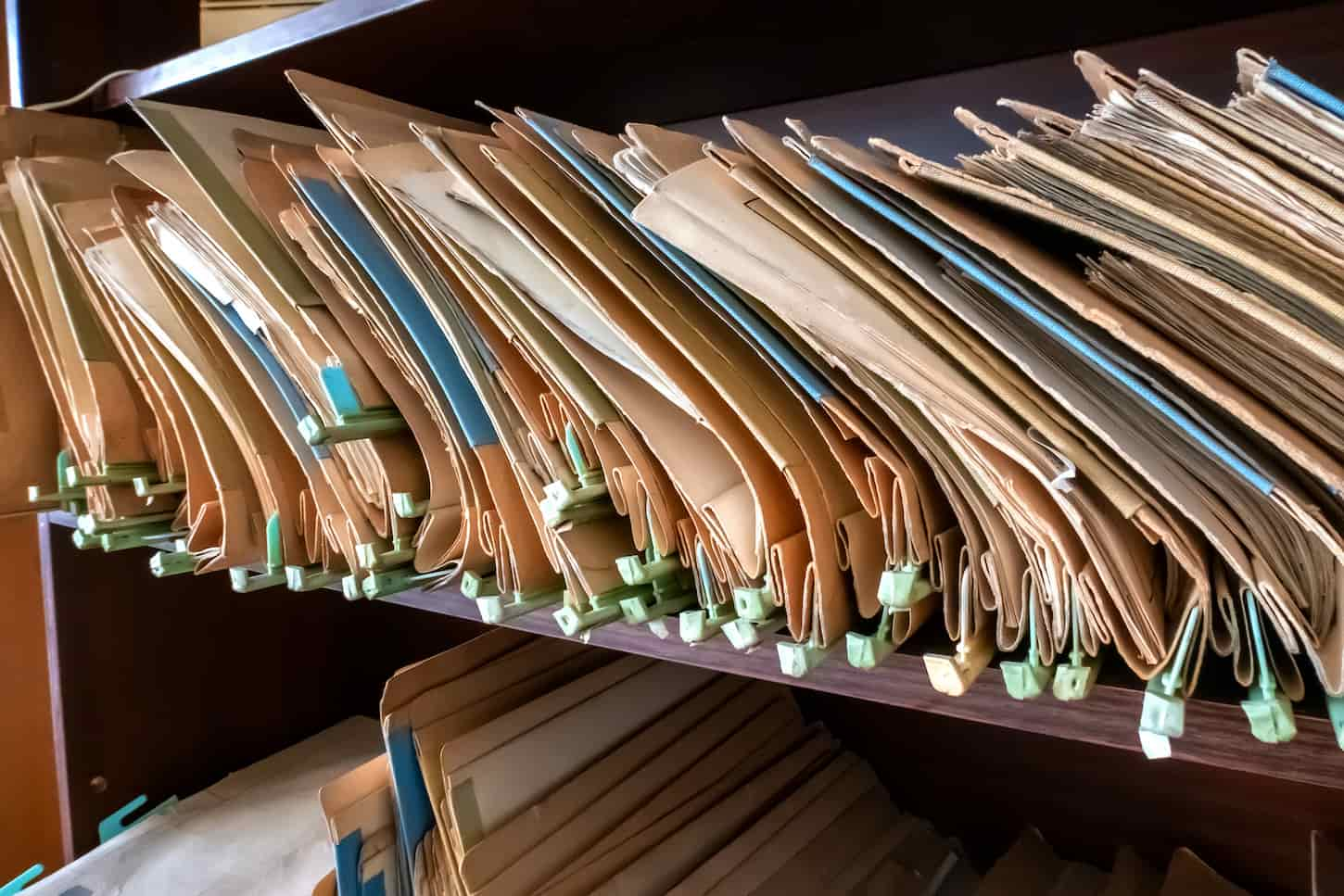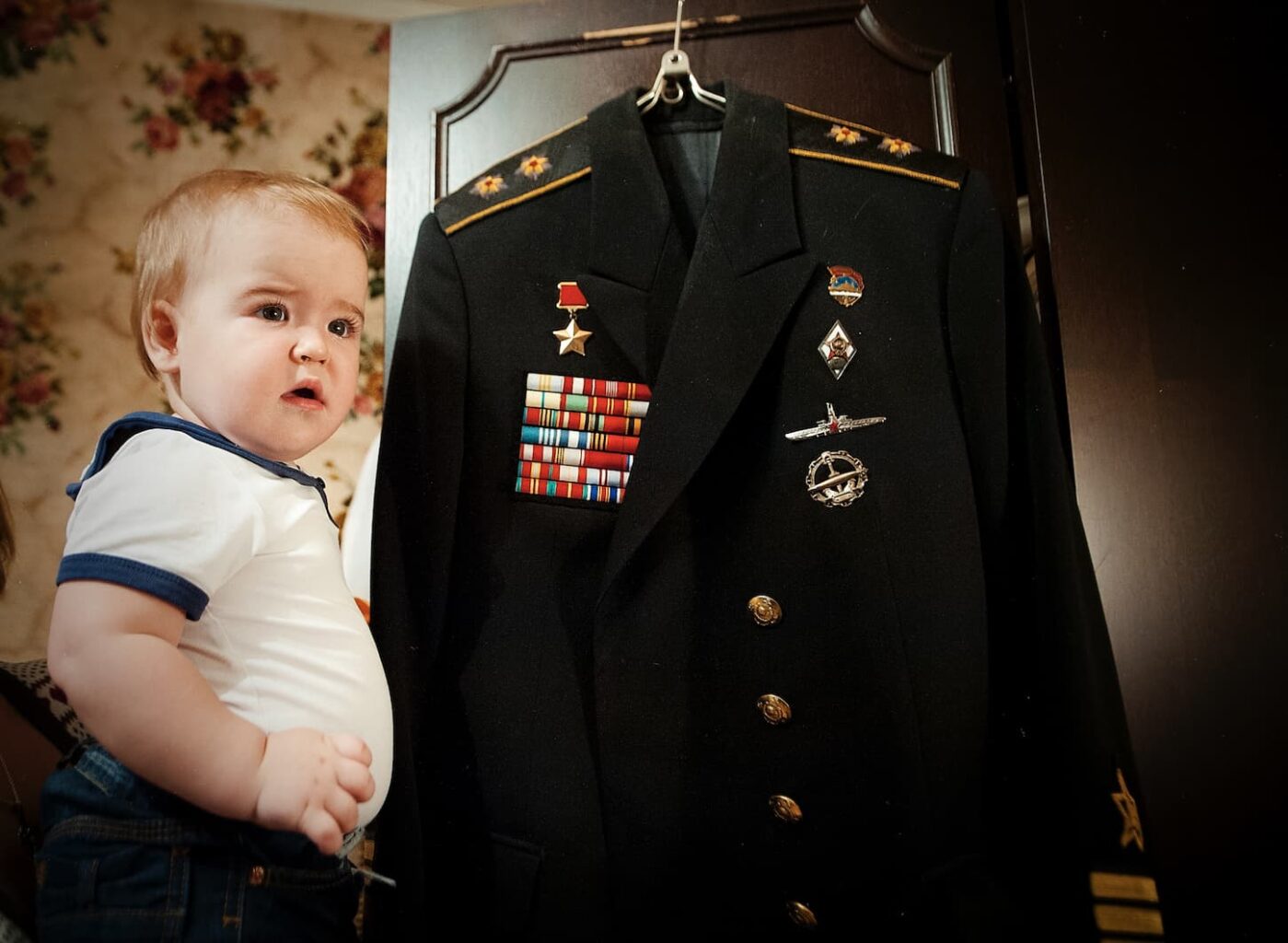Preparing for military detective work is demanding, but it’s also rewarding and fun. We’ll introduce you to some research strategies that hopefully will help your search.
Military records are a terrific way to find out if a grandfather served. However, although they are valuable information resources, they can be confusing. Usually, this type of research requires time and patience.
There are several types of military records, and we’ll tell you how and where to find them. So, let’s begin!

Did My Grandfather Fight in the War? How to Find Out
To find out if our grandfathers fought in a war, we must research various genealogical records to gather the necessary information and link it to them. Then, we can start with the investigation.
Let’s begin our quest with this simple yet essential question: Did my grandfather fight in the war? To find out about our grandfathers’ military past, always start by asking family members some questions about them. Here are some guidelines below.
Step #1: Ask family members
Regarding genealogy research, the best way to start is by asking family members about our grandfathers’ military history. Every family has some connection.
Since military service is considered an honor, families will pass on war and the army stories. After that, it’s for us to decide which part of the story is fact or fiction.
Step #1: Look through family memorabilia
Search through family memorabilia like photographs, letters, postcards, and journals. It’s surprising how much valuable information one photograph has.
For example, we might find a photo of our grandfather in a uniform or see a medal. These are all precious clues that will help us a lot.
Step #3: Cemetery records
If a grandfather is buried in a military cemetery, it’s safe to conclude he died in action. However, the headstone might reveal his rank if buried in an ordinary cemetery.
Step #4: Local research
Check out the local newspapers. The articles may reveal where your grandfather served, military achievements, and obituaries.
Step #5: Google it
This one is obvious, but we should know where to look. There is so much information on the internet, and it’s hard to know which websites are reliable. Here is an online website to check out: NARA (National Archives and Records Administration). It’s a government site and quite awesome.
NARA collects information and documents about significant events in American history. Some of the records are available to search online, but not all.
How to Find Military Records
Military records are fantastic sources that offer facts about the people who served in the military. They might hold helpful information like names, residence, military ranks, affiliations, etc. We can find them in an online archive or offline.
Once we have gathered all the information we need (when and where our grandfather served), we are ready for the next step: military records.
Online military records
Unfortunately, many military records are undigitized, but there has been a push in digitizing in the last couple of years. Digital options mean we can begin research in the comfort of our homes.
But there are a couple of things to keep in mind – first, because the digitalization of military records is new, the database is incomplete.
Military records are publicly available 62 years after personnel leaves the military. Before this period, access was only open to a spouse, child, sibling, or parent.
Online military records might include state and federal records. There will be more online success if we know what specific military records we need to research.
So, where to start our online search? Here are five great websites to check out:
- Ancestry.com’s Library
- Family Search
- Fold3
- American Ancestors
- Cyndi’s List
If you want our insights into other great online resources, check this article we wrote out: Are there Free Genealogy Websites? 12 Free Sites to Bookmark!
Offline military records
The National Archives and Records Administration (NARA) holds military service records. We can find these records in two physical locations:
- First, Washington DC – NARA has military records from 1775 to 1912.
- Second, St. Louis, Missouri – NARA holds military records from World War I.
Again, to get to the national archives website, use this link: https://www.archives.gov/.

How to Find Out if Your Grandfather Fought in WWI and WWII
There are several ways to determine if a grandfather fought in WWI and WWII, such as state archives and online databases. Database information, such as draft cards, census information, or family stories are great places to start.
Begin with the 1930 census, which contains data like occupations, birthplace, citizenship, immigration, and military service. Access the online 1930 census on the FamilySearch website.
Another way to find out if a grandfather fought in WWI and WWII is to look at his date of birth. For example, if he was born between 1886 and 1897, he was almost certainly involved in the military drafts.
Now, let’s start with the specifics. But, first, we’ll begin with the bad news – at the time, WWI and WWII military records were not a top priority on the federal government list.
Only recently, the government collected military records in one place. As a result, a grandfather’s records may be scattered in various locations.
The second challenge we may encounter is when searching for data at NARA. Sadly, most of the Army records from 1912 to 1960 were destroyed in a fire in 1973 in St. Louis. However, the Navy, Marines, and Coast Guard military records were archived in another place, so they were saved.
Fortunately, 20% of the Army military records remained intact, so maybe a grandfather’s records are in that lucky 20%. If they aren’t, that doesn’t mean he didn’t serve. It means we don’t have the records at this time – or they were destroyed.
The Ancestry and FamilySearch websites have an online archive of WWI and WWII draft registration cards. They contain valuable information like date and place of birth, occupation, marriage status, personal and employer’s address, physical description, and signatures.
The website Fold3 has an online database of WWI veterans’ pension payment cards from 1907 to 1933. We could find out if the military gave our grandfathers a pension, when and where they served, and how much their pension payment was.
How to Find Out if Your Grandfather Fought in Another War?
Our grandfathers may have fought in another war instead of WWI or WWII. So the research starts by asking family members and looking for old photographs, local newspapers, cemetery records, online resources, and military records.
Perhaps our grandfathers fought in the Korean War or the Vietnam War. Once we have his full name and date of birth, we can search for more details in the military records. This can be daunting, but the research tools have improved over the years.
Find the 1840 and 1910 census records, as they contain information about military service. Also, find out in what war your grandfather or any other ancestor served based on his date of birth and specific war.
Look at the chart below for more details.
| Ancestor’s date of birth | War chronology |
|---|---|
| 1726 – 1767 | Revolutionary War (1775 – 1783) |
| 1762 – 1799 | War of 1812 (1812 – 1815) |
| 1796 – 1831 | Mexican War (1846 – 1848) |
| 1811 – 1848 | Civil War (1861 – 1865) |
| 1848 – 1881 | Spanish American War (1898) |
| 1872 – 1900 | World War I (1917 – 1918) |
| 1877 – 1925 | World War II (1941 – 1945) |
| 1900 – 1936 | Korean War (1950 – 1953) |
| 1914 – 1955 | Vietnam War (1964 – 1972) |
How can we use this chart? After we find out what year our grandfathers (or great-grandfathers) were born, link it to a specific war. This way, we know where to search for a grandfather’s military record.
This chart is a significant first step that will help us know which military records to research. There are several types of military records. Let’s go through the most common ones. As mentioned, they can be found online or at NARA.
Military service records
These are accessible for all wars. In the service records, we can find information like the full name, address, unit, service number, rank, medical information, and date enlisted.
Draft registration cards
These records are available for WWI and WWII. Even if our grandfathers didn’t serve in WWI or WWII, they had to fill out the draft registration card at a certain age.
A draft registration card contains a full name, address, date, place of birth, occupation, and physical description.
They are full of wonderful nuggets of information. I (Kimberly) remember helping index these; they were my favorite indexing project to date.
Search bounty land warrants
The government provided bounty land for men who served in the Revolutionary War, the War of 1812, and the Mexican war. At first, bounty land warrants were the motivation to serve, and afterward, as an award for service.
The information they contain is a full name, number of warrants, rank, date, and number of acres.
Pension military records
The military granted pensions to the veterans and their families. They included those who served in the Revolutionary War, the War of 1812, the Mexican War, and the Civil War. As a result, pension records offer the most historical and genealogical information we cannot find anywhere else.
The records contain the full name, date, and place of birth, residence, address, rank, unit, service date, battles, injuries, details about their spouse and children, pension balances, occupation, death date, and correspondence.

How to Find Where Your Grandfather Served
Regarding genealogy research, finding military records relies on five branches. A grandfather may have served in Army, Navy, Air Force, Marines, and Coast Guard. Here is how to find out in which unit a grandfather served.
To find out where a grandfather served, we need to know how the U.S. military is organized. Once we know the basics, our search will be much easier.
In what branch of the military did your grandfather serve?
With some branches of the military, there is more success in finding information online, but some of it needs to be done in person. If unsure where a grandfather served, start with the date of birth. Most people who served were from 18 to 30 years old.
For example, photographs of our grandfathers in uniform are helpful. In addition, uniforms have insignia, which will help identify the branch that the grandfather served.
Start by asking family members, search veteran organizations, census records, cemetery records, and neutralization records. Then, we suggest going over the war chronology to find out if a grandfather served in a time of war.
Once the information has been successfully gathered, it’s time to select a military record to research.
Army military records
The army is the largest military branch dating to the beginning of the Revolutionary War. When it comes to genealogical resources, we are in luck. We can find army records on FamilySearch, Ancestry, and Fold3.
We can find impressive data collection from the end of the 18th century to 1914.
Navy military records
Navy military records are the way to find out what ship a grandfather served. Various data for Navy records covering numerous war periods list continental sailors, pensions, cruise books, ship logs, and muster rolls.
Again, these can be found on FamilySearch, Ancestry, and Fold3 sites.
Also, the U.S. Navy uploaded the records of many ships on the Wikipedia page. Check the multivolume The Dictionary of American Naval Fighting Ships (DANFS) and the websites Naval History, Heritage Command, and NavSource Naval History.
Air Force military records
The Air Force is the youngest of all five military branches starting from 1907. Here are two terrific resources to begin with: Fold3 and NARA. On the website Fold3, we will learn about Air Force history, which will give us the confidence to research our grandfathers’ military records on NARA.
Marines’ military records
The Marines are the elite military branch founded in 1775. They are loyal to the motto “Always Faithful “from the beginning. A tremendous genealogical resource is the website Ancestry, where we can search for our Marine ancestors and, of course, the NARA.
Coast Guard military records
The Coast Guard was founded in 1790. Regarding online resources for the Coast Guard, only a few options are available.
We suggest checking out this website: United States Coast Guard, for the complete history. In addition, check Ancestry for the list of casualties of the Coast Guard, Navy, and Marines.
To find out more, we’ll have to do the research in person on NARA in Washington, DC.

Why Can’t I Find My Grandfather’s Military Records?
We may not find our grandfather’s military records because the military still keeps them private or the fire destroyed them in the 1973 St. Louis fire.
We tackled this question a bit earlier, but here is some additional information. We’re not doing anything wrong in our research; we shouldn’t be discouraged and give up.
There is a wonderful online database on the Ancestry and Fold3 websites that can be of great help.
Military records privacy
Veteran’s military records are available to the public after 62 years have passed since the veteran’s service. After that, their military records are open to the public.
But, it might be possible to access their military records if the veteran or the closest family member gives us consent.
Why does this rule exist? The intention is to balance the veteran’s right to confidentiality and the public’s right to acquire the information.
NARA St. Louis fire
In 1973, a fire occurred at NARA in the National Personnel Record Center in St. Louis, Missouri. The cause of the fire is still unknown.
Around 80% of the Army military records were destroyed from 1912 to 1960, and 75% of the Air Force military records were destroyed from 1947 to 1964.
Fortunately, the Navy, Marines, and Coast Guard military records were not destroyed in the fire.
Is There a List of Names of Soldiers Who Died in a Specific War?
There is a list of casualties, starting from WWI. The lists, unfortunately, are not complete. However, there are still casualty reports available for those times. We can also find the names of those who died in WWI and WWII online.
The lists of names of the fallen soldiers before WWI are hard to find, but there are reports with casualty statistics from 1775 to the present. We can search for the names of the soldiers who died in WWI here and those who died in WWII here.

Key Takeaways and Next Steps
Given the regularity of U.S. warfare, our grandfathers or ancestors probably fought in a war. To find out in which war our grandfathers served, we should start with our own families.
Ask them questions and look for old newspapers, photographs, journals, military medals, and correspondence.
When we gather the basic information, it’s time to search for military records. They provide valuable insights and details into the military life of our grandfathers. Military records include full name, address, rank, unit, date of birth, etc.
This genealogical research demands time, but we guarantee it will be fun! Unfortunately, sometimes looking for a particular person can be like finding a needle in a haystack.
Information sources can be incomplete or destroyed due to neglect in the past. Thankfully, in recent years, military records have been available online.
Consider this article as a guide for the next steps in genealogical research; what questions to ask, who to ask, and where to search the data. We hope you can connect the dots and find your grandfather’s history. Good luck!
For some more interesting reading on genealogy, take a look at these articles that we wrote:
- Celebrating Genealogy: 9 Family Tradition Ideas Anyone Can Use
- How To Find Out Where an Ancestor is Buried: Complete Guide
- Family History: When Did Granddad Become a Citizen?
They’re all fantastic resources that will help you in your genealogy journey.
Resources
When learning about genealogy, it’s important to learn from various reputable sources. These are the sources used in this article and our research to be more informed as genealogists.
- “Ask Ancestry Anne: Why Can’t I Find My World War II Veterans Records?” Ancestry Corporate, www.ancestry.com/corporate/blog/ask-ancestry-anne-why-cant-i-find-my-world-war-ii-veterans-records. Accessed 18 June 2022.
- “Discover Your Ancestors in World War I Records.” FamilySearch, 13 June 2022, www.familysearch.org/en/blog/discover-your-ancestors-in-world-war-i-records.
- FamilySearch Wiki. “US Military Basic Search Strategies • FamilySearch.” FamilySearch Wiki, 19 May 2022. www.familysearch.org/en/wiki/US_Military_Basic_Search_Strategies.
- Findmypast. “11 Tips for Finding out Someone’s Military History | Blog.” Findmypast – Genealogy, Ancestry, History Blog from Findmypast, www.findmypast.co.uk/blog/help/11-tips-for-finding-your-military-ancestor. Accessed 18 June 2022.
- “Finding Your Military Ancestors.” Ancestryagency.Com, www.ancestryagency.com/blog/militaryrecords. Accessed 18 June 2022.
- “Genealogy Research in Military Records.” National Archives, 5 Aug. 2021, www.archives.gov/research/military/genealogy.
- “How to Search United States World War II Military Records.” FamilySearch, 13 June 2022, www.familysearch.org/en/blog/military-records-search-ww2-us.
- “How to Trace Your Ancestor’s World War I History.” Ancestral Findings, 1 Feb. 2019, ancestralfindings.com/how-to-trace-your-ancestors-world-war-i-history.
- “LibGuides: Military Records for Genealogy Research: Types of Military Records.” Libguides.Nypl.Org, libguides.nypl.org/c.php?g=928257&p=6688107. Accessed 18 June 2022.
- Michael Strauss. “Official Military Personnel Files for US Military Ancestors in WWI, WWII and Beyond.” Genealogy Gems, 17 Dec. 2018, lisalouisecooke.com/2017/12/06/official-military-personnel-files-for-us-military-ancestors-in-wwi-wwii-and-beyond.
- “Military Records and Identification | USAGov.” Usa.Gov, www.usa.gov/military-records. Accessed 18 June 2022.
- “—.” National Archives, 5 Aug. 2021, www.archives.gov/research/military/genealogy.
- Palmer, Elijah. “What Ship Did Grandpa Serve On? How to Find Your Loved One’s Military Records.” Hamptonroadsnavalmuseum.Blogspot.Com, 25 Nov. 2015, hamptonroadsnavalmuseum.blogspot.com/2015/11/what-ship-did-grandpa-serve-on-how-to.html?m=1.
- “Research A Veteran.” The National WWII Museum | New Orleans, www.nationalww2museum.org/war/research-veteran. Accessed 18 June 2022.
- Sunny. “5 Branches of US Military Records for Genealogy.” Genealogy Gems, 24 May 2019, lisalouisecooke.com/2018/02/19/us-military-records-for-genealogy.
- Support.Ancestry.Com, support.ancestry.com/s/article/Finding-Military-Records?language=en_US. Accessed 18 June 2022.
- Wikipedia contributors. “National Personnel Records Center Fire.” Wikipedia, 10 Apr. 2022, en.wikipedia.org/wiki/National_Personnel_Records_Center_fire.
